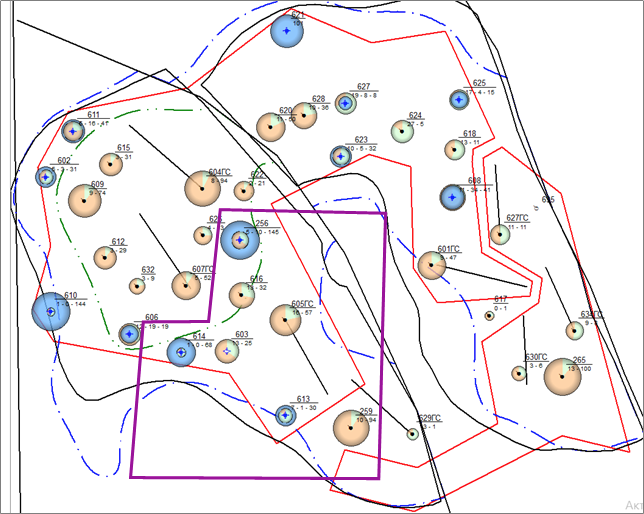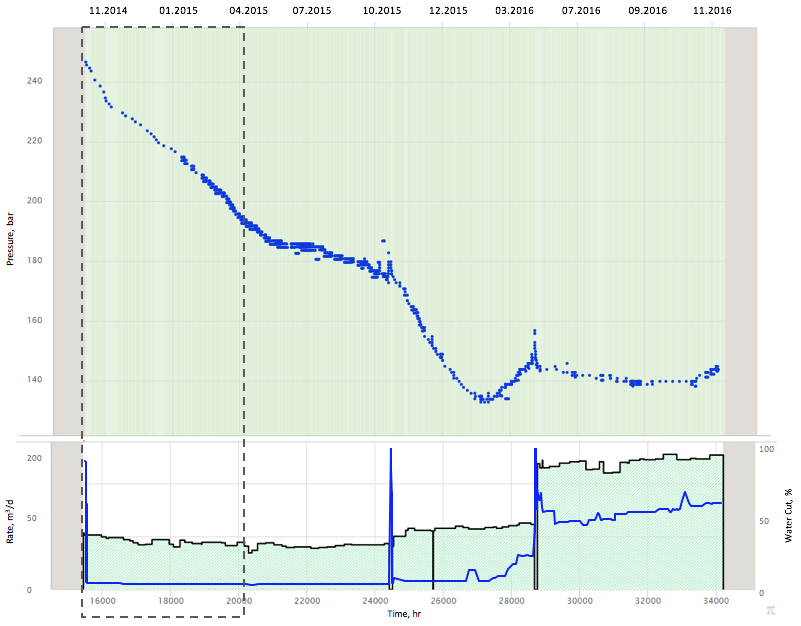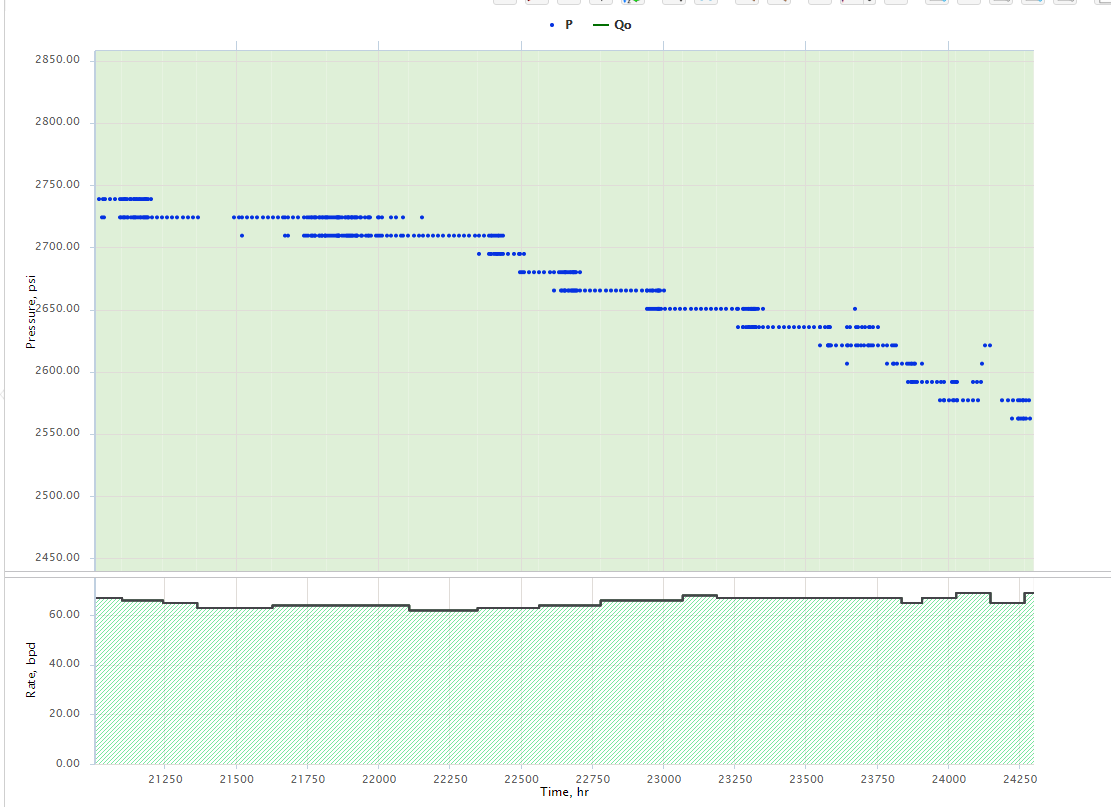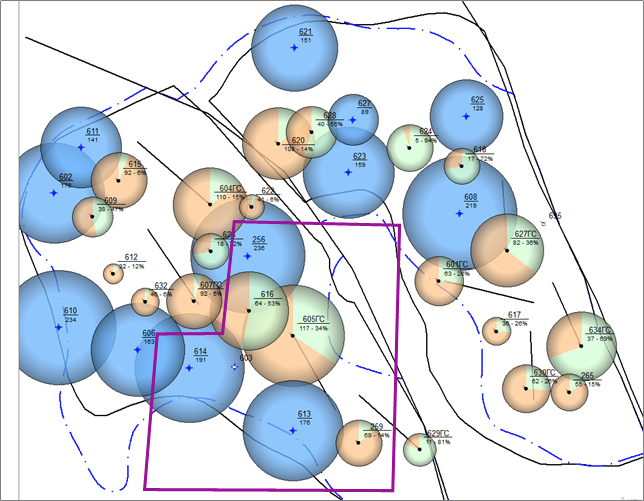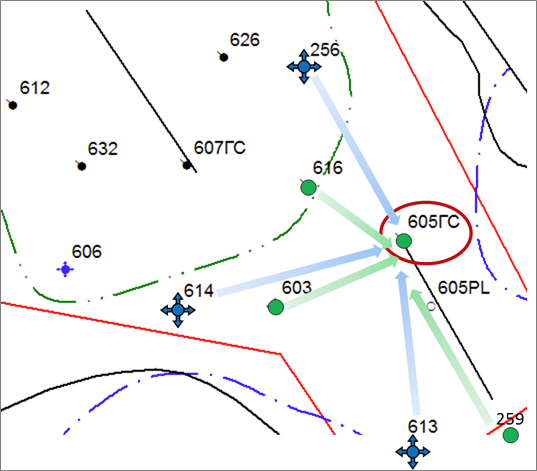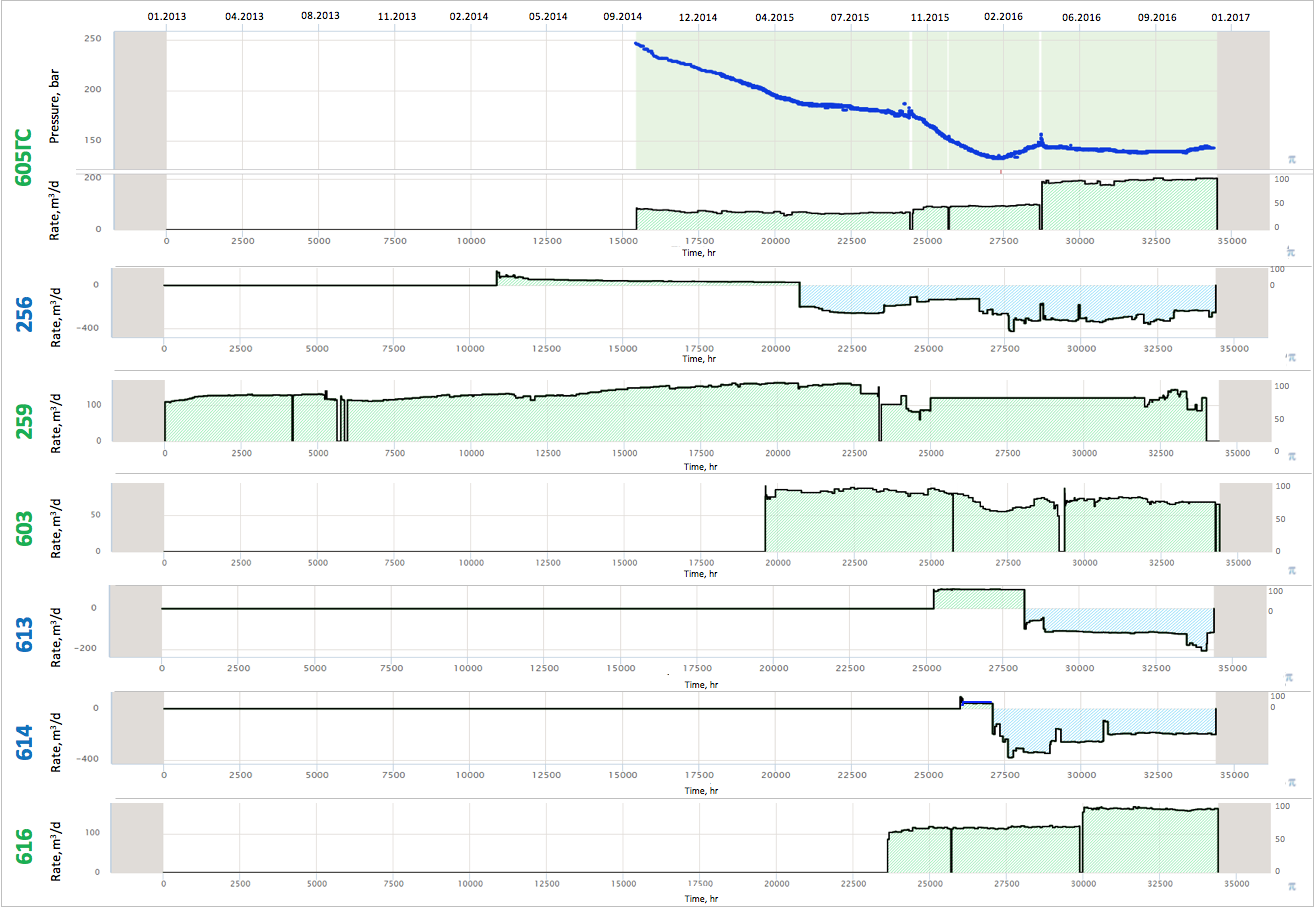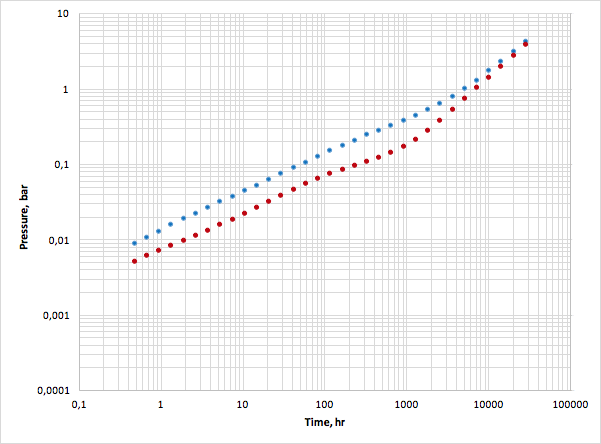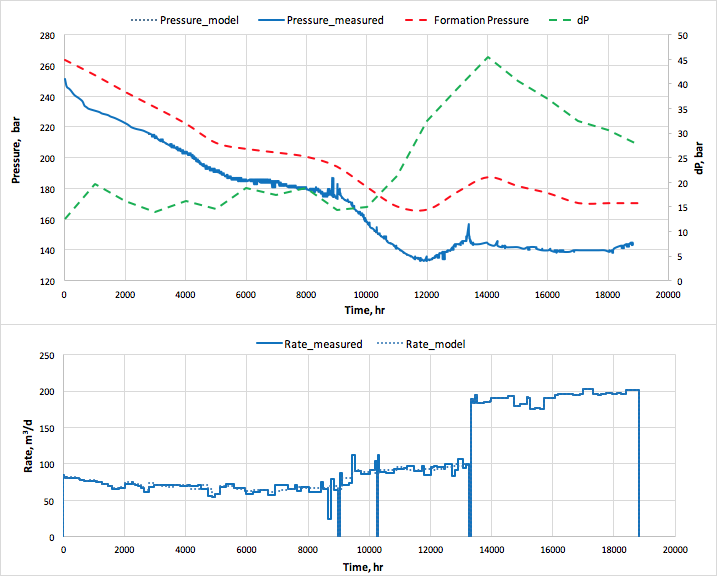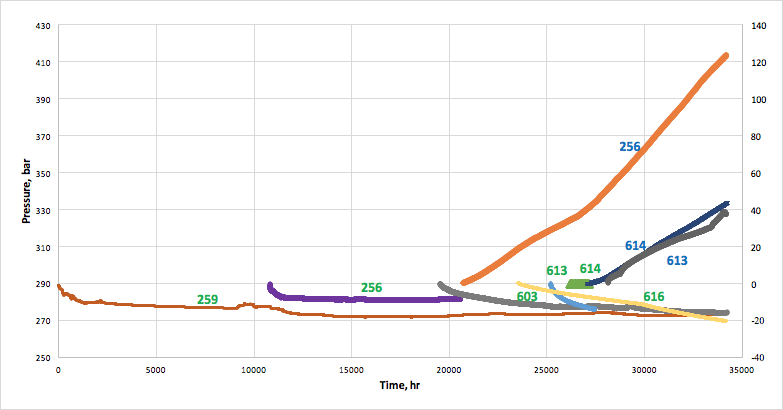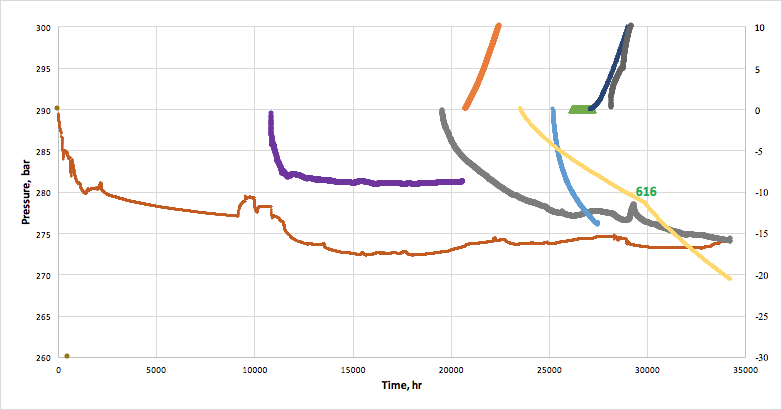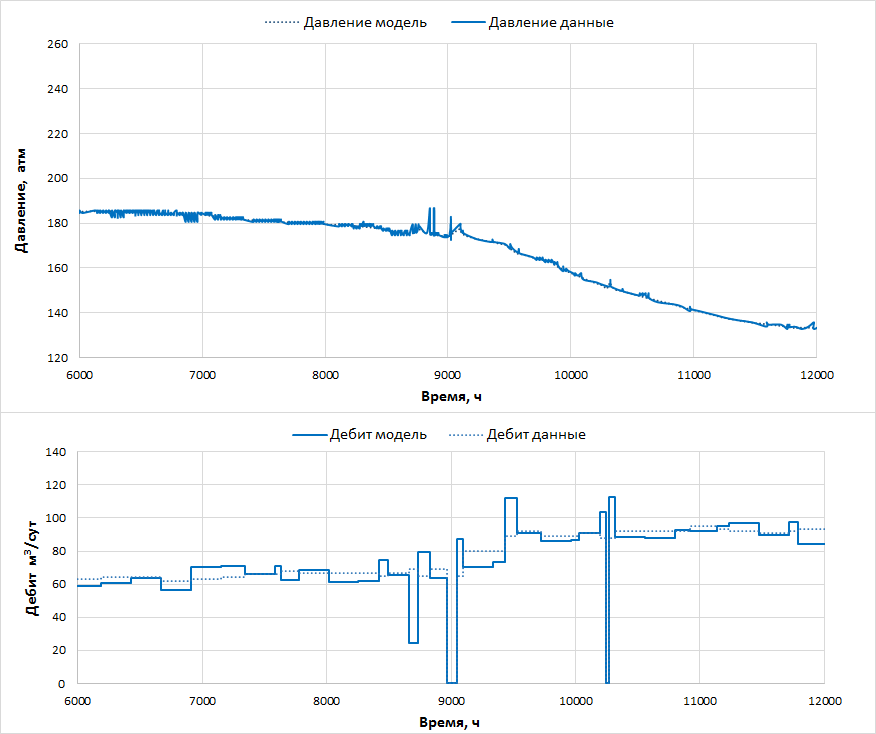...
- Collect flowrates and bottom-hole pressure (BHP) which are normally available with permanent downhole gauges (PDG)
- Data filtering
- Filter the data for overshoots
- Filter the BHP data with wavelet thresholding to reduce the noise
- Decimate the BHP data (usually 10:1 or 100:1)
- Translate the surface rates to downhole total rate qt with account of BHP at any moment of time
- Synchronise total flowrate qt variations with BHP variations
- Create multi-well history plot with qt, BHP, Yw, GOR/Rs.
- Primary Analysis
- Filter out shut-ins and hold drawdowns only
- Create material balance (BHP and Pe vs cum Q) and IPR (BHP vs qt) diagnostic metrics over the drawdown history
- Identify the zones of constant productivity index (PI = const), Steady-states (SS) and pseudo steady-states (PSS)
- Assess dynamic drainage volume Ve for all wells – this is a volume which well is currently draining with account of interference with other wells
- Deconvolution
- Select the constant Productivity Index time segments
- Remove pressure data during shut-in periods except possibly few valuable (representative and similar to drawdown)
- Process PBUs to assess formation pressures
- Input formation pressure Pe as constrains for future deconvolution
- Tune up the weights to match deconvolution trials with PBUs against DTRs
- In case of wells are sitting in the same homogenous reservoir compartment with no behind-casing complications then assume CTR are symmetric to further constrain deconvolution
- Perform multiwell deconvolution and QC
- Analyse the response and separate wells by non-interfering groups
- Repeat multiwell deconvolution for each well group and each constant PI time period
- Convolution and analysis
- Reconstruct formation pressure Pe history
- Reconstruct productivity index history
- Validate if PI is constant and repeat deconvolution exercises over various time intervals if required
- Analyse rates correction and check if it is within the metrological limits and raise allocation concerns and/or advise the corrections
- Create unit-rate spider-plot – a pressure impact diagram showing how one well with unit-rate would be varying the pressure in another well over time
- Create historical rates spider-plot – a pressure impact diagram showing how one well was varying the pressure in another well over time
- Create historical rates pressure interference map showing a current and cumulative impact from one well on another
- Create oil IPR at different formation pressure markups and analyse production optimisation potentials
- Analytical modelling
- Perform analytical pressure diffusion modelling of all DTR/CTR wit conventional Pressure Transient Analysis (PTA) using log-derivative log-log plots
- Assess potential drainage volume Ve,max for all wells – the volumes which well would be draining in case it would be the inly producing well in the field
- Assess well drainage transmissibility and cross-well transmissibility and compare them against each other and against the OH log interpretation on the map
- Analyse additional diffusion model parameters (skin-factor, fracture length, horizontal length, permeability anisotropy) against expectations
- Additional studies
- Production forecasts
- Numerical pressure tests
- Create N2 numerical pressure test scenarios for each DTR and CTR
- Check simulated DTR/CTR against deconvolved DTR/CTR in log-derivative diagnostic plots to understand where exactly numerical model may have discrepancies
- Try various model boundaries, barriers and reservoir properties to improve the match
See Also
...
Petroleum Industry / Upstream / Production / Subsurface Production / Field Study & Modelling / Production Analysis / Multiwell Retrospective Testing (MRT)
| Show If | ||||||||||||||||||
|---|---|---|---|---|---|---|---|---|---|---|---|---|---|---|---|---|---|---|
| ||||||||||||||||||
|
...
